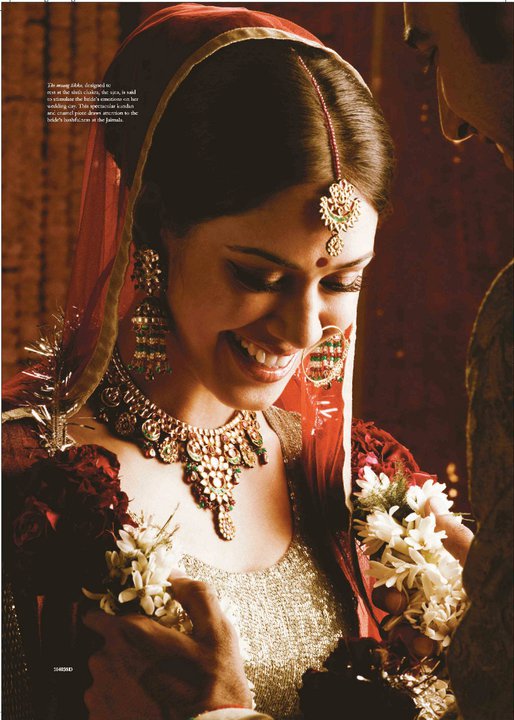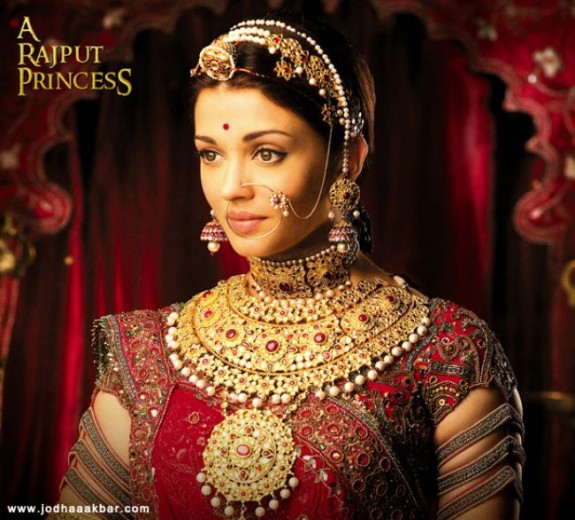Created during the Mughal reign and favored by Rajasthani royalty, Kundan jewelry is a bit of Indian history preserved today for the modern South Asian bride.
- Who: Kundan keshri, or just Kundan jewelry
- What: A jewelry style characterized by carefully enameled gemstones inserted into a gold base.
- When: Created during the Mughal reign.
- Where: Rajasthan (specifically Jaipur) and parts of Gujurat.
- Variations: Also called Meena Kundan (or Bikaneri or Jaipuri jewelry)
- Process: utilizes, in order, the Ghaat, Paadh, Khudai, Meenakari, Pakai, and Chillai
Kundan originally came out of the Jadau jewelry craftwork, differing only in the fact that Jadau uses only real diamonds while Kundan occasionally uses glass stones or beads.

The process by which the carefully enameled gemstones are inserted into a gold base, of either highly refined or pure molten gold, requires patience and artisanal creativity making each Kundan piece unique.
Though dating back to the early 16th century, Kundan jewelry remains a constant in the South Asian bride’s wedding trousseau. Kundan craftwork appears in all manner of wedding jewelry, from armbands to necklaces to payal, and even on the groom’s turban with the sarpech, a turban ornament.

Kundan jewelry was revitalized in 2008 with the Bollywood film Jodhaa Akbar (above), in which Aishwariya Rai Bachchan displayed many unique pieces of Kundan jewelry to help portray her Rajput rani character. Since then jewelry-makers have been making new Kundan pieces to meet the resurgence of demand, oftentimes putting their own modern spin on the ancient technique.
Sources The Hindu and Let's Know Handicrafts of India
Photo courtesy of Tanishq Jewelry and JodhaaAkbar.com


1 thought on “Kundan Jewelry – Fit For a Queen”
Comments are closed.